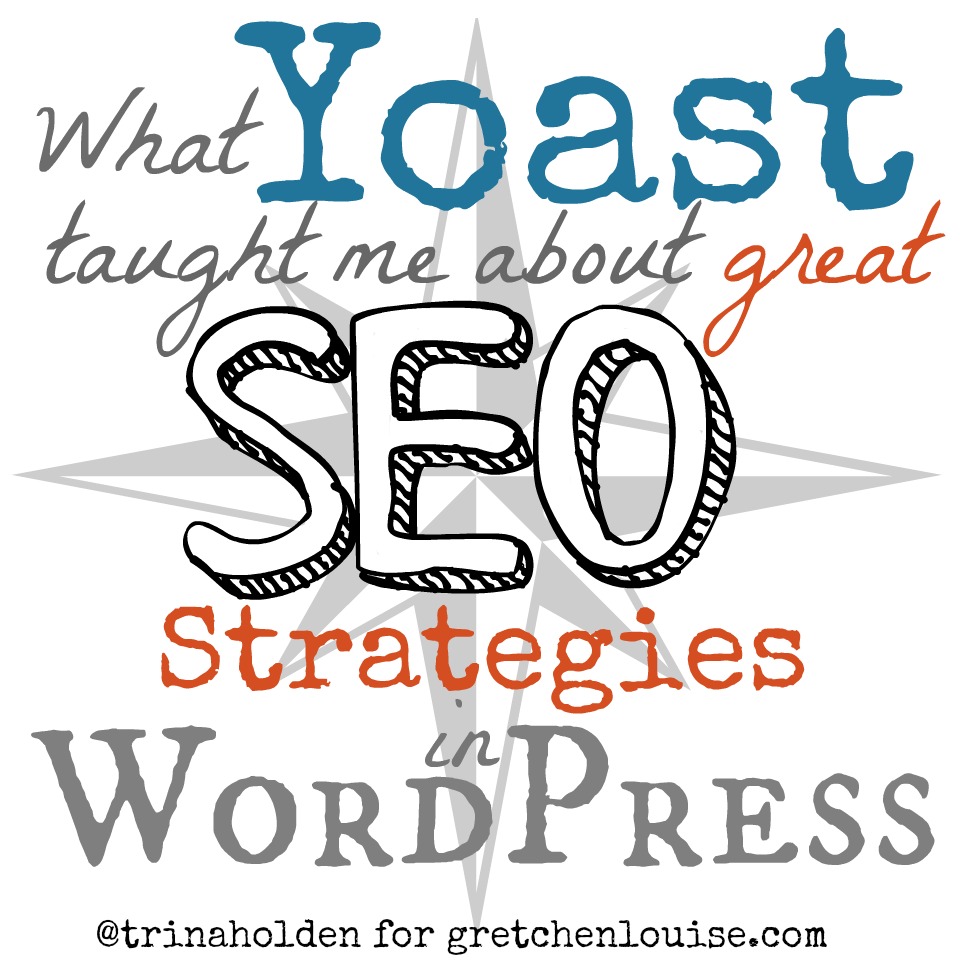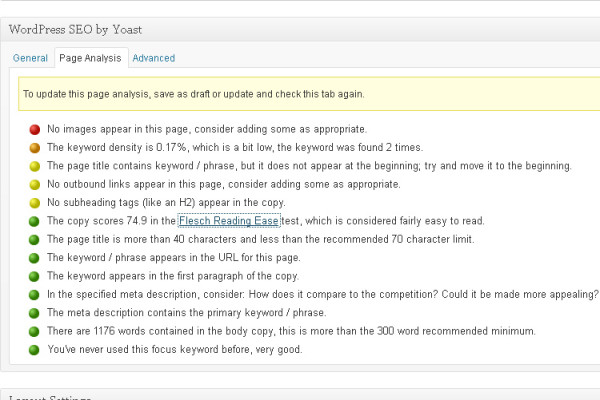SEO Strategies: What Yoast Taught Me About Great SEO
I’m delighted to have my friend Trina joining us today to talk about how much she loves Yoast’s WordPress SEO plugin. I hope you’ll enjoy her enthusiasm for serving her readers through SEO as much as I have! -Gretchen
SEO strategies and my blog have not been friends for very long. I blogged for 6 years before I dipped my foot in the foreign waters of SEO. (It took the first 3 years for me to even understand what Search Engine Optimization was, and 3 more years to think I needed to care.)
But one day I realized what a disservice I was doing to my potential readers in not making my blog accessible to search engines: when my post would have answered a question someone had in a voice they could relate to, I was hiding behind ignorance and a penchant for cutesy post titles. Also, I was convicted that I wasn’t being a wise steward of the time invested in a great post if I didn’t make it visible to search engines.
It was finally time to learn some SEO strategies, but I was overwhelmed. Thankfully, I have a techy friend who knew just the plugin to install on my blog to give me a leg up. And that’s how I met my best friend, Yoast. It only took a few months of consistently using the plugin WordPress SEO by Yoast for me to learn how to apply great SEO to any post, and see a significant rise in traffic. So here’s what Yoast taught me about great SEO strategies in WordPress.
3 Great SEO Strategies I Learned from Yoast
1. Choose a Keyword.
The keyword, or keyword phrase is the summation of the subject of your post in a word or short phrase. Yoast taught me how important it was to identify or create a keyword for each post to be built around. I used to write an entire post about ‘how to make yogurt’ without ever actually using the phrase that people would most likely type into Google if they wanted to find a recipe for homemade yogurt. It was a great post, but it was effectively invisible to those who were actually looking for it! Your keyword or phrase should be simple and straightforward, basically what you would use if you were looking for the post you’re about to write. (Hint: the keyword phrase for this post is “SEO Strategies”.)
2. Put the Keyword in Key Spots.
- In Your Title: Now, you could just title this post “SEO strategies”, but that’s kind of boring and like something a robot would spit out. So the strategy is to humanize your title and create a great headline while still including your keyword or phrase exactly as you entered it into the keyword box in Yoast. One easy way to do this is to start your title with your keyword, and then put a personal bit after (examples: “SEO Strategies: How Yoast Taught Me to Rock SEO” or “How to Make Yogurt: My Favorite Recipe”).
- In Your Post: Search Engines appreciate it if your post actually delivers what your headline promises. The only way they can be sure is if your post contains your keyword as well. Yoast gives you points for putting your key word at the beginning of the post, within a H2 heading, in your title and alternate text of your featured image, and scattered tastefully through your text. (Example: the keyword phrase in this post is in my first sentence, right up there in my first H2 heading, and I’ve also named my image “SEO Strategies”.)
- In Your Meta Description: If you don’t write your own mini (or meta) description of your post to appear in search results, Yoast will simply pull the first 156 characters of your post to use there. But you get extra points for composing your own, and using your keyword. This is your chance to ‘sell’ your post to searchers, especially if your opening paragraph was from a more personal angle. (Example: the meta description for this post is, “How I learned to choose and use keywords and other great SEO strategies the easy way by following the prompts provided by the Yoast plugin for WordPress.”)
3. Don’t Rely on Keywords Alone.
Although keywords are, well, ‘key’, they’re not the only thing that make a great post. Google and other search engines also appreciate a post with an image, a post that includes at least one outbound link, posts that are not too short (Yoast likes ’em over 300 words), and posts that are written in a readable style (yes, Yoast even ranks you on readability with the Flesch Reading Ease test).
After I finish writing a post, I go down and check the page analysis in the Yoast plugin and it usually gives me suggestions for improving the SEO.
With a few more tweaks to my post, I can usually get almost all green lights. The longer I use Yoast, the more healthy SEO practices become just a part of how I write a post, and editing for good SEO hardly takes any time.
Serving your readers with great SEO strategies
Not surprisingly, most of the things that make for good SEO are also what make a post enjoyable and helpful to your readers. So use this post as a starting point for improving your SEO strategies, and watch your stats and reader satisfaction grow.
Bonus tip: If you install and use the plugin WordPress SEO by Yoast, use Gretchen’s tip for customizing your WordPress Dashboard to position it right beneath your Visual Editor for easy access.





Thanks for this great post, Trina! 🙂 Ah, so that’s what those color-coded dots mean… 😉